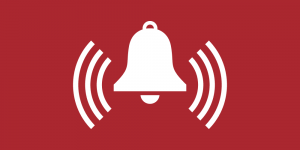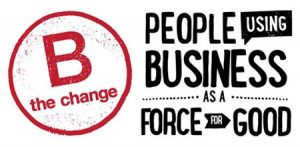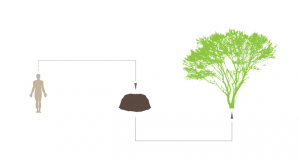Climate change (AKA climate instability/breakdown) is increasing the frequency and intensity of extreme weather, “natural” disasters, and emergency events. Unfortunately, many of these disasters are made even worse by human land use and development practices. In the last few years, many disasters (especially hurricanes/typhoons, floods, heat waves, wildfires, extreme cold/Arctic blasts, and landslides) around the world have been catastrophic, causing unprecedented amounts of damage and numbers of deaths (and injuries and illness), and creating thousands of climate migrants and refugees. No region is immune to climate-related disruptions and disasters; while some places are at higher risk than others (and some places are even becoming uninhabitable), there’s no truly “safe” place to live. Beyond climate disasters, anyone can also experience manmade disasters (e.g., industrial accidents or explosions), power outages, and severe storms. The more prepared you and your neighbors are, the more resilient you and your family and community can be.
 Here’s something that most of us should be doing right now (everyone really, but especially those of us who are in areas that are at risk of flooding, hurricanes, fires, earthquakes and/or tsunamis, severe winter weather, or extended power outages): Assemble your emergency supplies, and make evacuation/safety plans (including meeting spots, out-of-area contacts, etc.). You should have emergency supply kits (AKA “go bags”/backpacks) stashed in your home (preferably near an outside door) or in a shed, garage, or another out-building, as well as in at least one of your family’s cars, and ideally also at your place of work. Workplaces and schools should also have emergency supplies and evacuation plans in place.
Here’s something that most of us should be doing right now (everyone really, but especially those of us who are in areas that are at risk of flooding, hurricanes, fires, earthquakes and/or tsunamis, severe winter weather, or extended power outages): Assemble your emergency supplies, and make evacuation/safety plans (including meeting spots, out-of-area contacts, etc.). You should have emergency supply kits (AKA “go bags”/backpacks) stashed in your home (preferably near an outside door) or in a shed, garage, or another out-building, as well as in at least one of your family’s cars, and ideally also at your place of work. Workplaces and schools should also have emergency supplies and evacuation plans in place.
There are many good emergency checklists out there (see the Ready.gov and RedCross.org lists and the other resources that are listed at the end of this post). To get started, below is a basic list of some important things to grab (if you are able to) before exiting or evacuating your home/building in an emergency, followed by a list of some of the items to assemble now and keep in your emergency kits. Print out and start reviewing your checklists ASAP and keep a copy of them in a memorable place (e.g., in or next to your emergency kit/bag or on your refrigerator, and also keep a copy on your phone) so that you can easily refer to them in an emergency, when you may not be able to think very clearly. Start assembling your emergency kits even if you can’t pull everything together at once. Having something ready is better than nothing; you can keep adding to your kits over time or add kits in other locations.
GRAB BEFORE YOU GO checklist
The following are some things that probably can’t or won’t be saved in your emergency kits ahead of time, but that you should try to grab before leaving your house (or wherever you may be when an emergency strikes) if time allows:
- Pets (and any other domesticated animals) — with their collars on (w/ ID tags or microchips that have current contact info, ideally more than 1 phone number); plus leashes, carriers/crates, meds; water, food, bowls, towels; cat litter/box (if applicable)
- Wallet and Keys; purse / bag (w/ checkbook)
- Cell phone (and charger cord)
- Eyeglasses
- Important meds
- Sturdy shoes; warm jacket
- Laptop and charger (and/or computer back-up drive)
- Portable safe / small valuables [plus the safe’s key, if applicable]
- Some photos / photo album(s)
+ Your emergency kits/bags [see below]
Evacuation Tips:
- If evacuating due to a coming wildfire or flood or hurricane/storm, leave early (ASAP) and try to take all or most of your vehicles with you (if roadways aren’t congested yet and you have enough time and drivers) to get them out of the danger zone, so they won’t get burned or flooded and destroyed. Make sure your evacuation vehicle’s gas tank is full or close to full.
- If there’s a fire, hurricane, or tornado in the vicinity and/or you need to evacuate your home for any reason, turn off the gas line if you have time. After an earthquake, turn off the gas and water lines to your house until all aftershocks are over and the utility companies have been able to check the lines for breaks or leaks. Note: Keep the right-sized/adjustable wrench near-by the gas shut-off. Try it out before you need to use it.
- Also see CalFire’s Pre-Evacuation Preparation Steps, as well as these additional wildfire evacuation tips.
During or immediately after an emergency event or on days with extreme high or low temperatures or power outages, check on your neighbors, family, and friends, especially those who are elderly, disabled, ill, homeless, or living alone, and those who have infants or special needs.
—————————————————————–
EMERGENCY KIT / “GO BAG” checklist
(This is a partial list of items to be assembled in advance, before an emergency happens.)
It’s best to put your emergency supplies in backpacks or other durable, water-resistant, and easy-to-carry bags. You can purchase pre-assembled emergency supply kits/bags, but make sure to supplement those with other important items that haven’t been included:
- Grab Before You Go list (see above), printed out as a quick reference
- Contacts List (including emergency services numbers, doctors’ names/numbers, and your out-of-area contact, etc.: print this out ahead of time and save copies in key locations and online)
- Important papers/documents (e.g., copies of IDs, birth certificates, passports, insurance papers, deeds, legal docs, Will, bank and credit card account info., copies of prescriptions)
[Tip: Take photos of your IDs, debit/credit cards, and other important documents and save those and key contacts on your phone and remotely in “the cloud” so you can retrieve them from your account even if you lose your phone or computer. For more suggestions on protecting documents and valuables, see this AARP article.]
- Cash (including some small bills); an extra credit card
[Tip: Consider getting a waterproof and fire-rated safe for your home, or rent a safe deposit box elsewhere, to hold some of your valuables, important papers, jewelry, heirlooms, extra cash, and some family photos, etc. If it’s the type of house safe that’s bolted down, you may have to leave it behind in an emergency but you may be able to recover its contents later. If it’s portable (i.e., light enough to carry and not bolted down), you may be able to take it with you during an emergency/evacuation, but that type is more susceptible to being stolen (if your home is burglarized). If the safe has a key, be sure to keep a key in your emergency kit or on your keychain or somewhere you’re likely to find it in an emergency. If it has a combination lock, make sure you can remember the combination or write it down somewhere secure/in “the cloud.”]
Note: This list is mainly related to evacuating, but some of these first items at the top of the list also apply if you need to “shelter in place.”
- WATER to last several days; and water purifier bottle(s) or tablets
- Toilet paper
- Spare meds (including any prescription meds)
- First Aid Kit (you can buy one off-the-shelf or make your own)
- Pet/animal kit (if applicable)
[extra collars and leashes, meds; carriers/crates; water, food, bowls, towels; extra cat litter and portable litter box; spare ID tag with current contact info, ideally more than 1 phone number; if microchipped, make sure your contact info is current in the database]
- Special items for any infants, elderly, or disabled members of the household (e.g., baby food, formula/bottle, diapers, wipes, critical meds, assistive devices, etc.)
AND:
- Food / snacks (non-perishable) [check expiration dates and refresh items every year]
- Toothbrush & toothpaste (and other essential toiletries)
- Spare/old set of eyeglasses
- Spare set of clothes (esp. underwear, socks) and shoes
- Hats, scarves, gloves
- Flashlights; lantern; headlamp; candles
- Lighter / matches
- Soap and detergent
- Bags (garbage/grocery, etc.)
- Towels; rags, paper towels
- Small radio
- Batteries
- Back-up/storage/solar charger
- Work gloves
- Utensils; can opener; camp kitchenware set
- Tools: Wrench and pliers, knife, multi-function tool, etc.
- Blanket / thermal emergency blankets
- Tent, sleeping bags / camping supplies (grill or camp stove?)
- Duct tape
- N95-rated smoke/dust masks; safety goggles
- Fire extinguisher [Also, watch an online tutorial on how to use one, or ask your fire dep’t. to show you]
- Whistle
- Tarp(s)
- Bucket
- Gas can
- Flares
- Reflective vest or other visibility gear
- Safety helmet
- Hydrogen peroxide (for disinfection)
- Propane canister
- Crowbar
- Solar-powered or hand-cranked gadgets (e.g., radio, flashlight, charger)
- [And ideally, a solar generator, or a solar PV system with battery storage]
Also, make sure you have hoses, buckets (filled with water, during fire seasons), a shovel, and at least one fire extinguisher on your property, for putting out spot fires. And once or twice a year, make sure all of your smoke detectors are working and have new batteries in them. (Earthquakes, downed power lines, broken gas lines, fireplaces, oven/stove or grill use, batteries, and various other things can cause fires in or around your house, so these tips apply even if you are not in wildfire country.)
You can find other “Go Bag/Kit” lists at Ready.gov’s Build a Kit page and Red Cross’ Survival Kit Supplies page.
Note: I’ll be creating PDF versions of my checklists above, so they can be downloaded and easily saved and printed. Check back for the PDFs. I will also periodically add to and make improvements to this post and these lists.
————————————————————
For additional and more comprehensive information and other tips on household- and community-level emergency preparedness and disaster response/relief, please go to:
Ready.gov
Red Cross: How to Prepare for Emergencies
Also download the Red Cross’ various mobile apps to your phone (for Emergency, Earthquake, Flood, Hurricane, Tornado, First Aid, Pet First Aid, etc.), and follow your region’s Red Cross branch on social media.
Nixle local alerts (by text/phone)
To sign up for Nixle alerts, text your zip code to 888777.
Also download and set up the PulsePoint Respond app. And check with your County or City (e.g., emergency management office) and your local electric/gas utility to see if they have local emergency alert/notification systems that you can sign up for. And consider signing up on NextDoor.com to receive neighborhood/community notices (including public safety notifications from your local Sheriff’s department).
Resilient Design strategies
Partnership for Inclusive Disaster Strategies
Disaster Hotline for the Disabled: 800-626-4959
CORE: Community Organized Relief Effort
National Voluntary Organizations Active in Disaster (NVOAD)
CERT (Community Emergency Response Teams)
Mutual Aid Disaster Relief
Team Rubicon
Post Carbon Institute’s Community Resilience resources
ASPCA Disaster Preparedness information re. pets/animals
HALTER Project (Horse, Livestock, and other animal emergency response & prep.)
International Fund for Animal Welfare (IFAW) disaster response teams
Humane Society’s disaster relief work
Also do an online search to see if your state, county, or community have established a Community/County Animal Response Team (CART).
Ready for Wildfire
Fire Safe Council
Fire Adapted Communities Network
Other disaster response training programs (a listing)
FEMA (Federal Emergency Management Agency)
Unfortunately, FEMA is not always a reliable source of assistance, due to underfunding and a considerable increase in catastrophic disasters. It is important for neighborhoods, towns, counties, and states to form their own emergency/disaster response initiatives and mutual aid groups, so that communities can be more prepared and self-reliant, both during the immediate aftermath of a disaster and the longer-term recovery. If your town or county doesn’t already have an emergency preparedness and/or disaster response team or group, consider organizing one for people and/or for animals, or join one of the disaster response groups listed above. (Here’s a good website that was created by one small town’s emergency response team.) Or you can get involved by: setting up or attending a local CERT training, becoming a Red Cross volunteer, becoming a Search & Rescue volunteer for your county/region, getting certified in CPR and First Aid, or training to become a volunteer firefighter (which is especially helpful if you live in a rural area).
You can find many of the organizations listed above (and others) in our Twitter list on Disaster/Emergency Response (and Humanitarian Aid).
Related posts:
- Our Tinderbox World: Wildfire Prevention and Risk Reduction [Added 2022]
- Resilience: Disaster-Resistant, Adaptive, and Restorative Design and Planning
- Solar Generators: Clean, Quiet, Portable Power
- Extreme Heat Health, Safety, and Survival [Added 2023]
- Location, Location, Location: How to choose a sustainable place to live / build a home
- Climate and Energy-Related Solutions, Tips, and Resources
Also see: our Twitter list on Disaster/Emergency Response (and Humanitarian Aid) as well as our Twitter list on Wildfires, Fire Risk Reduction, and Fire Ecology.
In the future, I hope to publish a post on Sustainable Emergency Shelters (e.g., temporary or permanent dwelling/housing units that can be built quickly and efficiently for refugees, homeless people, and people who have lost their homes in disasters). For the time being, we have a post on Modular, Prefab, and Compact Options for Green Homes and Structures, which may provide some helpful links for people who are looking to rebuild a home or create a temporary dwelling while they make rebuilding or relocation plans.
I’ll also be creating PDF versions of the checklists in this post, so they can be downloaded and easily saved and printed. Check back later for the PDFs.
January 22, 2019

 Another book I would recommend is the following [disclosure: it was written by a family member]. Though it is not directly related to environmental issues, it does impart important lessons on non-violent dissent (and the folly of violence) that all activists and social movements (including environmental activists and movements) can benefit from:
Another book I would recommend is the following [disclosure: it was written by a family member]. Though it is not directly related to environmental issues, it does impart important lessons on non-violent dissent (and the folly of violence) that all activists and social movements (including environmental activists and movements) can benefit from:


 The only thing that is truly certain in this life is that all of us will die. We don’t know when or how, but we do know that ultimately we cannot avoid death. Impermanence and death are inevitable, universal, and unavoidable parts of life.
The only thing that is truly certain in this life is that all of us will die. We don’t know when or how, but we do know that ultimately we cannot avoid death. Impermanence and death are inevitable, universal, and unavoidable parts of life.



 I recommend giving some real thought to your own values and priorities (and desired legacy), and sharing your own mini-manifesto or values/mission statement with others.
I recommend giving some real thought to your own values and priorities (and desired legacy), and sharing your own mini-manifesto or values/mission statement with others.










 Here’s something that most of us should be doing right now (everyone really, but especially those of us who are in areas that are at risk of flooding, hurricanes, fires, earthquakes and/or tsunamis, severe winter weather, or extended power outages): Assemble your emergency supplies, and make evacuation/safety plans (including meeting spots, out-of-area contacts, etc.). You should have emergency supply kits (AKA “go bags”/backpacks) stashed in your home (preferably near an outside door) or in a shed, garage, or another out-building, as well as in at least one of your family’s cars, and ideally also at your place of work. Workplaces and schools should also have emergency supplies and evacuation plans in place.
Here’s something that most of us should be doing right now (everyone really, but especially those of us who are in areas that are at risk of flooding, hurricanes, fires, earthquakes and/or tsunamis, severe winter weather, or extended power outages): Assemble your emergency supplies, and make evacuation/safety plans (including meeting spots, out-of-area contacts, etc.). You should have emergency supply kits (AKA “go bags”/backpacks) stashed in your home (preferably near an outside door) or in a shed, garage, or another out-building, as well as in at least one of your family’s cars, and ideally also at your place of work. Workplaces and schools should also have emergency supplies and evacuation plans in place.